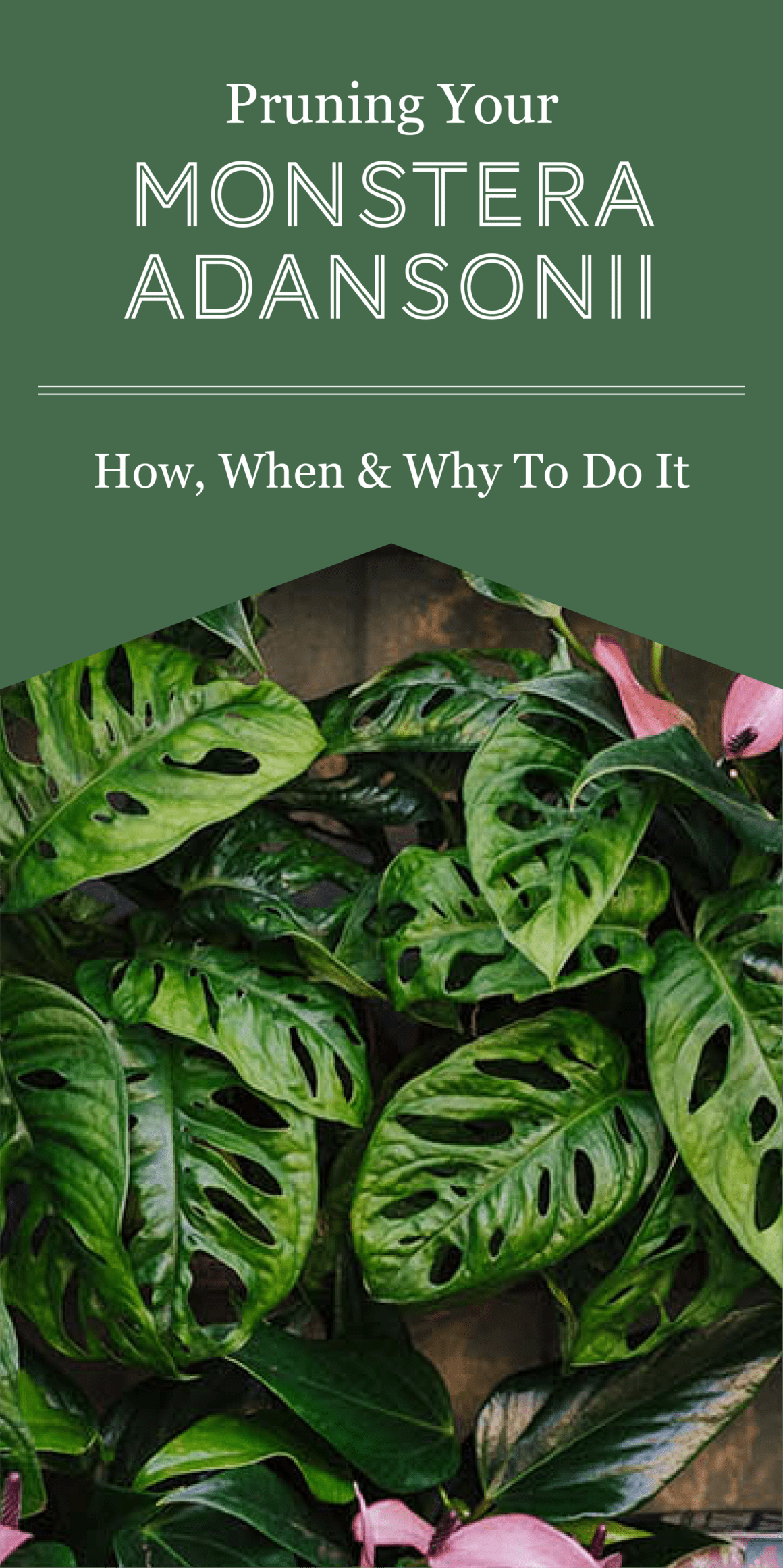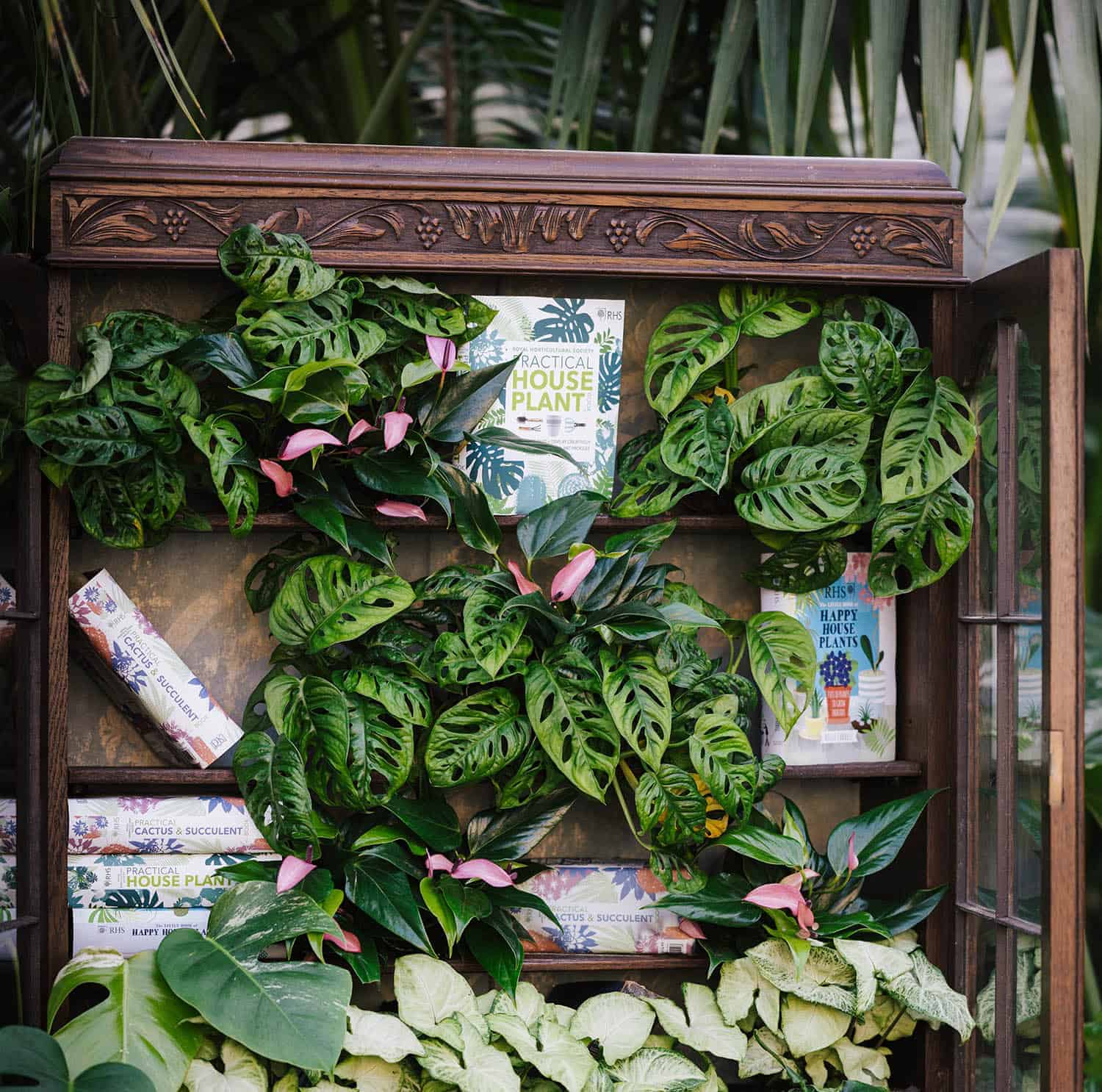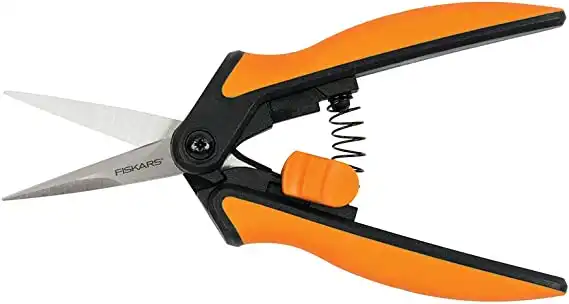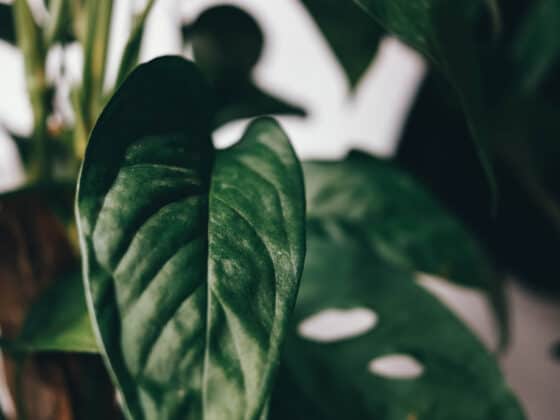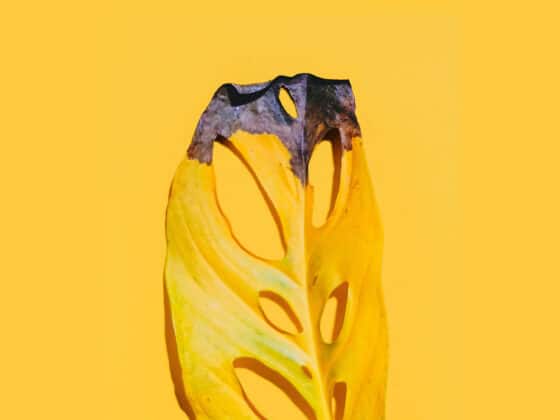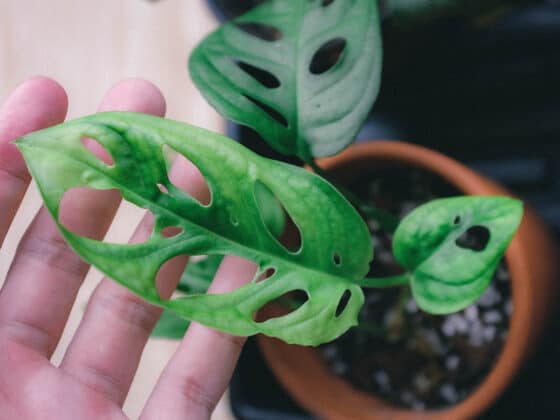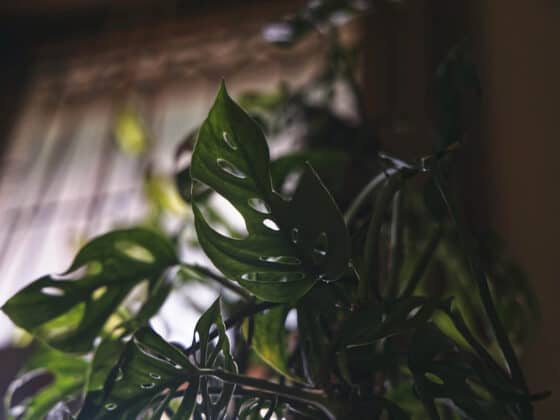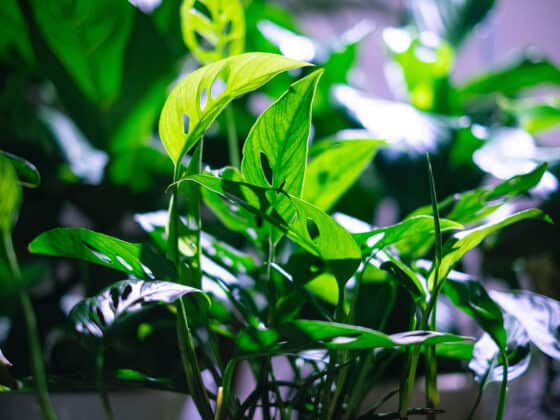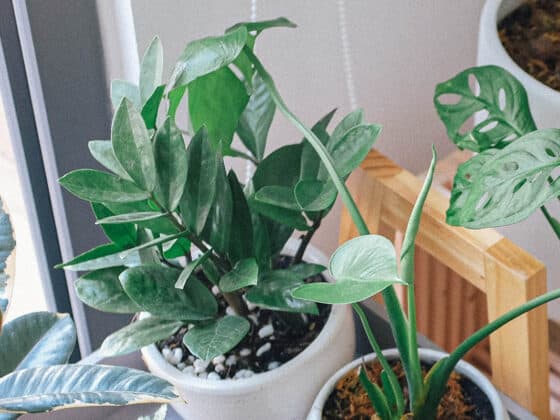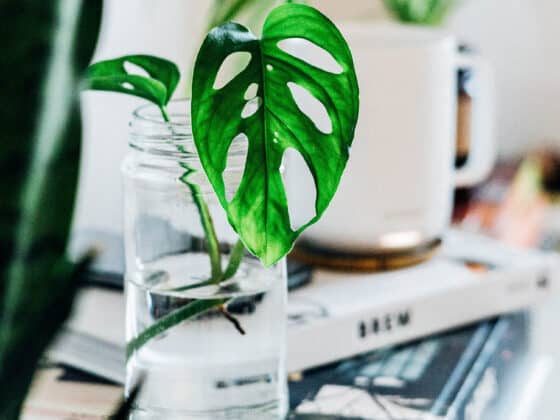My Monstera adansonii, sometimes called the “Swiss cheese plant,” is growing at an unexpected rate. In the past few months, it has spread out and taken over my coffee table. If you’ve found yourself in a similar situation, it may be time to prune your Monstera. Lucky for both of us, it’s not hard to do.
Wondering about pruning your Monstera adansonii? Pruning your Monstera is a great way to keep your plant healthy and encourage growth. And it’s easy, too! Using sharp, clean scissors, trim dying leaves, or cut away leggy sections. Pruning can stimulate new vines and keep your plant looking great.
There are several reasons that you should prune a Monstera adansonii, and thankfully, the process is super simple. With the right tools and a little knowledge, you’ll be on your way to giving your favorite houseplant a nice, fresh cut.
Reasons To Prune a Monstera Adansonii
Are you looking for a plant that grows lush and full? Then look no further than the Monstera adansonii! During their growing season of spring to early fall, these plants grow quickly. Inside, they can easily climb to heights of 10 feet while, as a vine, they can develop trails of at least as long.
And while this can make a spectacular addition to a home or office, Monstera adansonii can overpower a small space. But with a bit of simple pruning, the plant can be kept tidy, while encouraging the new and healthy growth you want.
Best Time of Year for Pruning Monstera Adansonii
While it is fine to remove dead or dying leaves anytime, if you’re planning a substantial pruning, it is a good idea to prune your Swiss Cheese plant in the spring. Monstera adansonii, like many other varieties of houseplant, goes dormant in the winter.
This is important to consider because even the most careful pruning causes a bit of stress to a plant. When plants are pruned during their dormant period, they may grow weaker and be less able to rebound from the damage. By pruning your Monstera adansonii in the spring, you are making cuts at the start of the growing season, allowing the plant months to heal.
If pruning poses a risk to the plant, why do it? Pruning may stress out a plant by removing leaves and stems that produce food and help with respiration, but it also helps to redirect energy from old portions of the plant toward new and healthy growth. Additionally, there are some beneficial reasons to prune a plant, making your Monstera healthier in the long run.
Reason #1: Pruning Removes Dead and Dying Leaves
Before you begin to prune, you will want to look at your plant carefully to identify any leaves that appear to be dead or dying. Typically, these leaves will be yellow or brown.
Don’t worry about a few yellow leaves. Some leaf discoloration is normal. As a plant ages, the older leaves age out and are replaced by new ones. Those old leaves turn yellow and eventually brown and then fall off or are clipped from the plant.
(If, however, you are seeing lots of discoloration on young and old leaves alike, then there is probably an underlying problem that needs to be solved to keep your plant healthy.)
Plants expend energy to keep their leaves alive. But unhealthy leaves drain energy from the plant without giving anything in return. Trimming those leaves off lets the plant focus on growing healthier leaves that will contribute more to the plant’s overall health.
An unhealthy leaf will not recover, so don’t feel bad about choosing those first for pruning. Once a leaf has turned yellow or brown, there is no returning to its former green color.
Reason #2: You Can Remove “Leggy” Growth
Leggy is a term plant lovers use to describe disproportionately long stems, resulting from low lighting conditions. Often leggy plants will appear tall and thin, or spindly, with few small leaves lower on the stem.
While this isn’t always fatal for a plant, leggy Monsteras may not have the support for their growth and can collapse – resulting in broken stems. These plants also may not have enough leaves to provide needed energy, leading to sickness.
Pruning leggy stems can help improve your plant’s health by reducing the amount of stem that the plant has to sustain and encouraging new growth. To remove these portions, trim bac as close to the main stem as possible.
Note: Since legginess is caused by low lighting, you should adjust your Monstera’s exposure to light. The leggy areas you’ve removed will be replaced by more legginess unless you solve this underlying problem.
Reason #3: Training the Plant to Grow How You Want
Some houseplants, including the Monstera adansonii, tend to grow until they have filled a space completely – taking over a bookshelf or covering a wall. Pruning your plant allows you to train the plant to grow in the way you choose.
While you may want to give your plant an overall pruning, to reduce the total size of the Monstera, you may also encourage your plant to grow along a trellis, up a stake, or along a decorative fixture. Removing stray stems that may pull the plant in a different direction will encourage the plant to stay in a particular shape.
But remember, pruning a plant encourages growth, so your trimming will need to be part of an ongoing process if you want to keep your Monstera in line. Sometimes working with these quick-growers can be a bit of an uphill battle.
Tools for Pruning Monsteras
Now that you have decided why to prune your Monstera adansonii let’s look at how to do it. One of the most important tools for pruning a houseplant is a pair of disinfected pruning scissors.
While you can use regular scissors for some trimming work, pruning scissors (like these from Amazon) are specifically designed to cut through thick stems. This may be especially important if your Monstera adansonii has grown to a large size. Quality pruning scissors usually have large, non-slip handles, sharp blades, and special designs to make it easier to cut sturdy plants with precision. This reduces the likelihood of injuring yourself and the plant.
Though any cut you make on a plant can create the possibility of infection or “plant shock,” the odds of a bad outcome are much higher if the cut is jagged or excessively large. For this reason, you’ll want to make sure your scissors are sharp, and your cuts are quick and clean.
Once you have a reliable pair of pruning scissors, you will want to disinfect them thoroughly, since any dirt, sap, or bacteria that is transferred into the cut can harm your plant. Some garden centers sell specialized disinfectants for pruning scissors, but you can also use 70-100% isopropyl alcohol or a mix of 1-part bleach to 9-parts water.
If you have sensitive skin, consider wearing a pair of gloves when you prune. The sap of some houseplants, including Monstera adansonii, can irritate the skin, eyes, and mucous membranes of the mouth and throat. Using garden gloves can reduce the likelihood that you will transfer any irritants onto your skin during the pruning process.
Pruning Your Monstera Adansonii
Once you have your tools and have identified the leaves and stems for pruning, it is time to snip away. Make a clean cut of the leaf and the connecting stem as close to the “parent branch” as you can. Be careful not to cut or nick the parent branch, since this can lead to infection.
Continue pruning until unhealthy or unsightly leaves have been removed, as well as any leaves you have pruned to encourage new growth or reduce overall plant size. Remember to make quick and clean cuts and avoid any sawing motion that can result in jagged edges.
Propagate What You Prune
Leaves that are yellow or brown should be discarded, but you may find that you have cut away some healthy leaves, as well. These leaves can often be propagated into new plants, especially if they have 2-3 “nodes” (the little bumps along a plant’s stem) below the leaf. Those nodes will be the growth point for your cutting to develop a new set of roots.
Monstera adansonii cuttings can be propagated in water or in soil. I usually prefer water propagation where I simply insert the tip of the cutting into a vase or jar of water and let them develop roots over the course of a few months. But some people believe that planting directly into soil creates the strongest root systems in new cuttings. To read more about propagating Monsteras, click here.
Whichever propagation method you choose, you’ll be happy to hear that Monsteras grow new roots quickly – much sooner than some other common houseplants. With a little bit of patience, you’ll soon have turned your one giant Monstera adansonii into more to fill out your collection and share with your friends.
